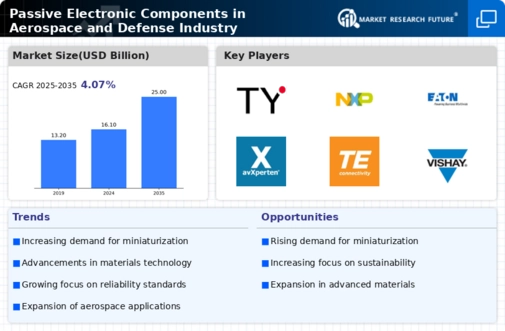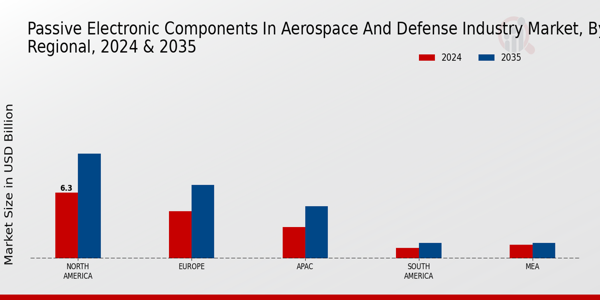Market Growth Chart
Increasing Defense Budgets
The Global Passive Electronic Components in Aerospace and Defense Industry is experiencing growth driven by rising defense budgets across various nations. Countries are prioritizing military modernization and technological advancements, leading to increased investments in aerospace and defense sectors. For instance, the United States has allocated substantial funds to enhance its defense capabilities, which directly influences the demand for passive electronic components. This trend is projected to contribute to the market's expansion, with estimates indicating a market value of 16.1 USD Billion in 2024 and a potential increase to 25 USD Billion by 2035.
Technological Advancements
Technological advancements play a crucial role in shaping the Global Passive Electronic Components in Aerospace and Defense Industry. Innovations in materials and manufacturing processes enhance the performance and reliability of passive components, such as capacitors, resistors, and inductors. These advancements are vital for meeting the stringent requirements of aerospace applications, where reliability and efficiency are paramount. As technology evolves, the demand for high-performance passive components is expected to rise, further driving market growth. The anticipated CAGR of 4.08% from 2025 to 2035 underscores the potential for continued innovation and development in this sector.
Focus on Reliability and Safety
Reliability and safety are paramount in the Global Passive Electronic Components in Aerospace and Defense Industry. The rigorous standards and regulations governing aerospace applications necessitate the use of high-quality passive components that can withstand extreme conditions. As a result, manufacturers are investing in quality assurance processes and certifications to ensure their products meet industry standards. This focus on reliability not only enhances the safety of aerospace systems but also drives demand for advanced passive components. The ongoing emphasis on safety is likely to support the market's growth trajectory, contributing to the anticipated CAGR of 4.08% from 2025 to 2035.
Growing Demand for Miniaturization
The trend towards miniaturization in the Global Passive Electronic Components in Aerospace and Defense Industry is gaining momentum. As aerospace systems become more compact and lightweight, the need for smaller and more efficient passive components is increasingly evident. This demand is particularly pronounced in applications such as unmanned aerial vehicles (UAVs) and advanced avionics systems, where space constraints are critical. Manufacturers are responding by developing innovative solutions that maintain performance while reducing size. This shift is likely to contribute to the market's growth, aligning with the projected increase in market value to 25 USD Billion by 2035.
Environmental Regulations and Sustainability
Environmental regulations and sustainability initiatives are increasingly influencing the Global Passive Electronic Components in Aerospace and Defense Industry. Governments and organizations are prioritizing eco-friendly practices, leading to a demand for passive components that comply with environmental standards. Manufacturers are exploring sustainable materials and production methods to reduce their environmental footprint. This shift towards sustainability not only aligns with regulatory requirements but also appeals to environmentally conscious consumers and stakeholders. As the industry adapts to these changes, the market for passive electronic components is expected to evolve, potentially enhancing its growth prospects in the coming years.

















